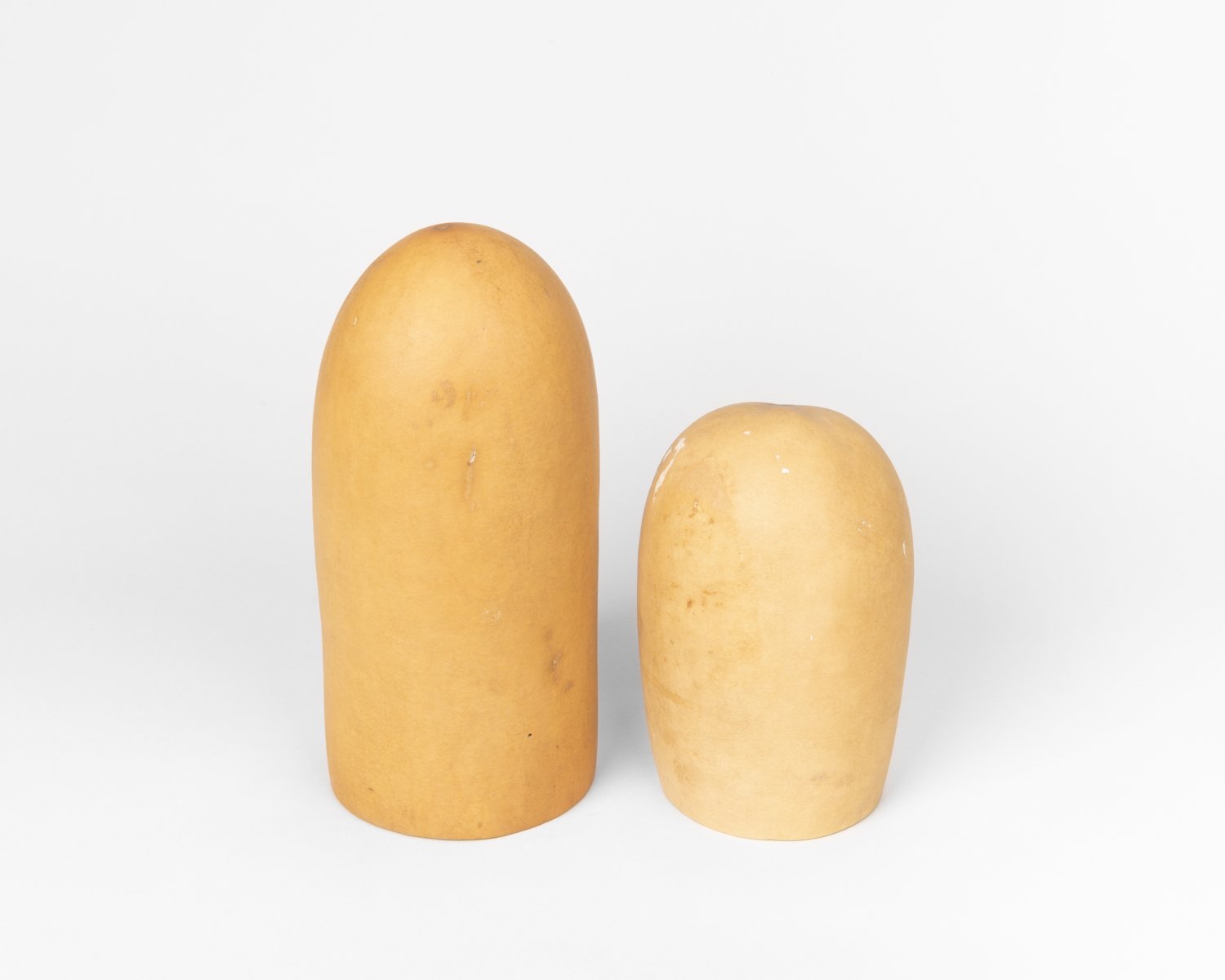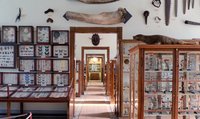Flaschenkürbisse (Lagenaria siceraria) und die aus ihnen gefertigten Kalebassen kommen in Südamerika, Afrika und Asien vor. Der Flaschenkürbis ist eine der ältesten Kulturpflanzen der Welt. Wahrscheinlich handelt es sich hier um ein Schöpfgefäß mit Loch, an dem der Henkel fehlt und einen Becher. Beides sind Alltagsgegenstände, wie sie fast auf dem gesamten afrikanischen Kontinent vorkommen. Laut historischer Beschriftung handelt es sich um “Wasserschöpfer Frucht vom 'Leberwurstbaum' Usambarabergland – Ostafrika”. Das Fürstenhaus von Schönburg-Waldenburg hatte vielfältige Kontakte zu Missionaren der Leipziger Mission, die in dieser Region missionierten. Wahrscheinlich sind die Kalebassen über eine Reise nach Ostafrika oder durch Missionare nach Waldenburg gelangt. Die Objekte stammen aus der ehemaligen Sammlung des Fürstenhauses.
en

